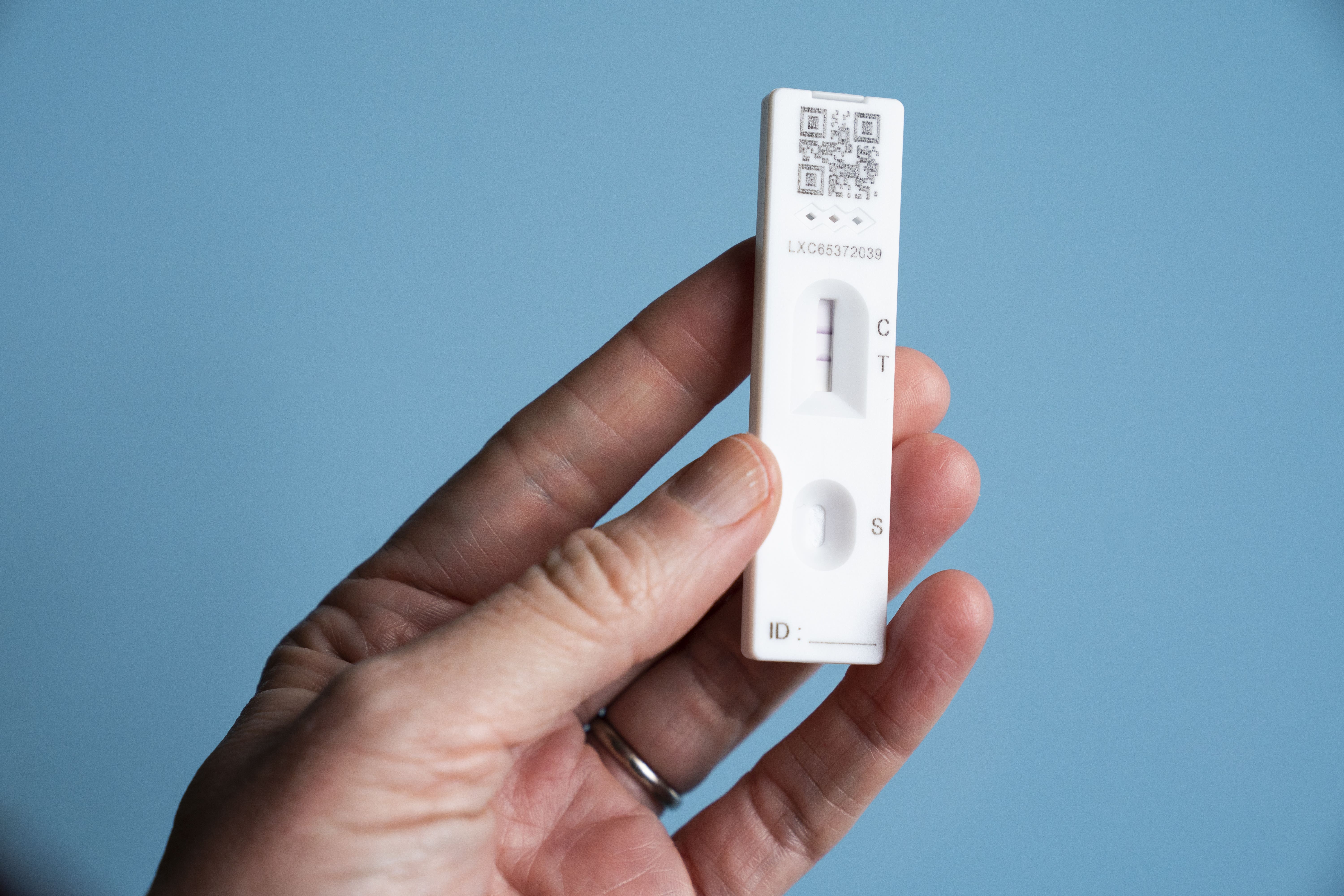‘Mixed picture’ for Covid infections but rise in England may have levelled off
There has been an increase among secondary school aged children.

The latest rise in Covid-19 infections in England appears to be levelling off – but virus numbers are continuing to increase in Scotland and Northern Ireland, figures show.
Wales is the only part of the UK seeing a clear fall in infections.
The current wave of the virus is being driven by a number of Covid-19 variants that have been circulating for several months, including two that have now been named: Omicron BQ.1 and XBB.
These are being monitored for their potential to spread rapidly, but have not been designated variants of concern, the UK Health Security Agency said.
The total number of people in private households in the UK testing positive for coronavirus stood at 2.05 million in the week to October 17, broadly unchanged on 2.01 million in the previous week, according to the Office for National Statistics (ONS).
This is some way below the peak of nearly four million reached in early July, during the wave caused by the Omicron BA.4/BA.5 subvariants of the virus.
The rate of increase in UK-wide infections has slowed recently, with the latest total up just 2% on the previous week.
Kara Steel, ONS senior statistician for the Covid-19 infection survey, said the new figures show a “mixed picture”.
“Though infections appear to have slowed in England and are now declining in Wales, they are increasing in both Northern Ireland and Scotland,” she said.
“Infections are highest in those aged 50 and over in England, though there has been an increase in secondary school aged children.
“It remains too early to say from the data whether we are seeing a turning point in the level of infections – which remain high across the countries.”
In England, the number of people testing positive for coronavirus in the week to October 17 was 1.75 million, or around one in 30 people, compared with 1.71 million the previous week, which was also one in 30.
The ONS described the trend in England as “uncertain”.
Scotland has seen levels rise, with 159,200 people likely to have Covid-19, the equivalent of one in 35, up from 144,400, which is again one in 35.
Northern Ireland has seen an increase, where the latest estimate for infections is 53,700, or one in 35 people, up from 44,200, or one in 40.
Wales is the only nation where levels are currently falling, with 86,100 people likely to have had Covid-19 in the week to October 17, or one in 35, down from 117,600, or one in 25.
A number of Omicron variants have been circulating in the UK since the summer, including the two that have now been named as BQ.1 and XBB.
BQ.1 is being monitored because of its “rapid growth”, while XBB is thought to be a factor in the recent spike in Covid-19 cases in Singapore, according to the the UK Health Security Agency (UKHSA).
There is potential for these and similar variants to cause a “further increase in transmission” of the virus in the near future.
Dr Meera Chand, UKHSA director of clinical and emerging infection, said: “It is not unexpected to see new variants emerge.
“Neither BQ.1 nor XBB have been designated as variants of concern and UKHSA is monitoring the situation closely, as always.
“Vaccination remains our best defence against future Covid-19 waves, so it is still as important as ever that people come take up all the doses for which they are eligible as soon as possible.”
Infection rates in England are highest among 50 to 69-year-olds, with 4.1% likely to have had Covid-19 in the week to October 17, or around one in 25.
Rates have increased for this age group over the two weeks to October 17, but the trend is uncertain in the most recent week, the ONS said.
There has been a rise in the proportion of children testing positive in school Year 7 to 11, though levels remain low at 1.9%, or one in 55 people.
Three regions of England saw an increase in infections in the latest survey: the East Midlands, London and north-west England.
The ONS infection survey is the most reliable measure of the prevalence of coronavirus and is based on a sample of swab tests from households across the UK.
But there is a lag in the reporting of the data, due to the time it takes for the survey to be compiled.
More recent figures show the number of people in hospital in England with Covid-19 has started to fall.
A total of 9,131 patients testing positive for coronavirus were in hospital as of 8am on October 26, down 12% from 10,387 a week earlier.
Patient numbers had been rising since mid-September, but this trend looks to have come to a halt, with the total now having fallen for nine days in a row.
Both Scotland and Northern Ireland are also seeing patient numbers starting to fall, while the trend in Wales is not yet clear.
Dr Mary Ramsay, UKHSA director of public health programmes, said the fall in hospital numbers is “a testament to the continued success of the autumn booster programme”, but warned against complacency as “cases could rise quickly again throughout the winter”.
She added: “Please come forward for your booster as soon as it is offered to you. Vaccines remain our best protection against disease.”
All people aged 50 and over are eligible for a fresh booster of Covid-19 vaccine, providing they had their last jab at least three months ago.
Doses are also available to frontline health and care workers, pregnant women and people with weakened immune systems.
Bookmark popover
Removed from bookmarks